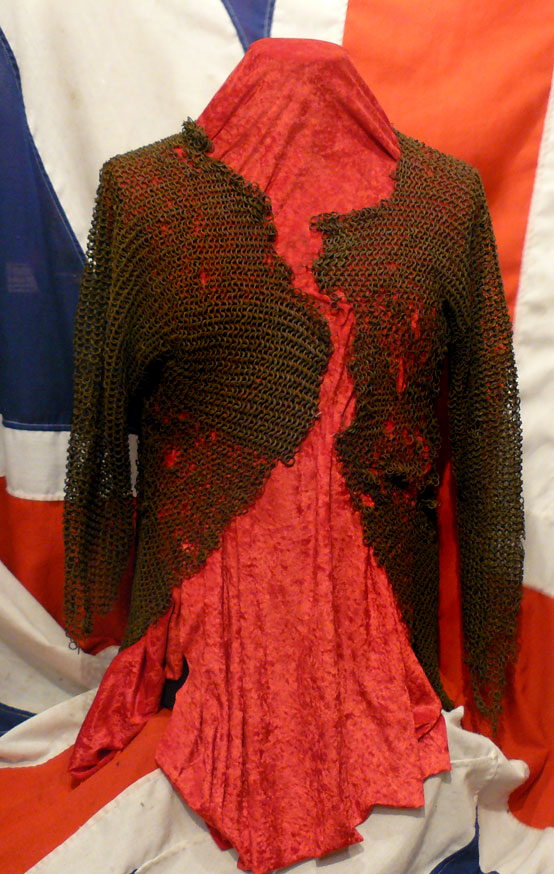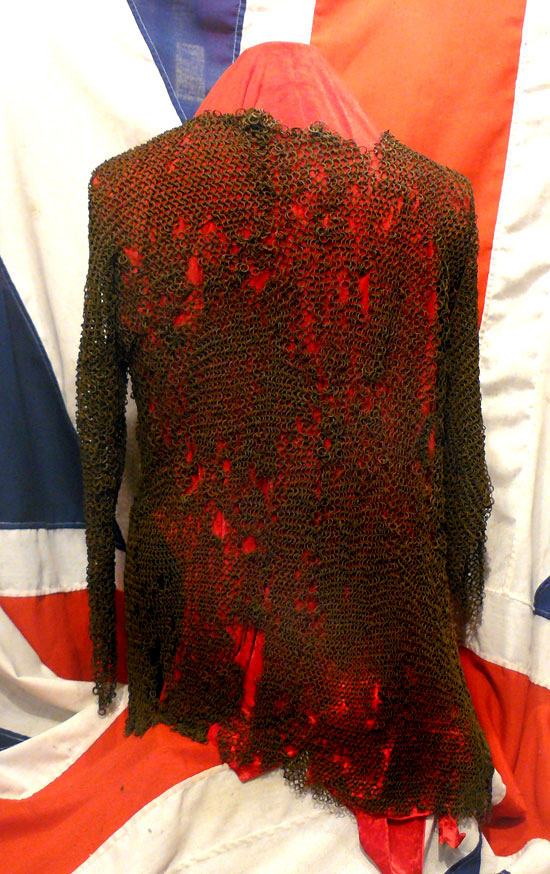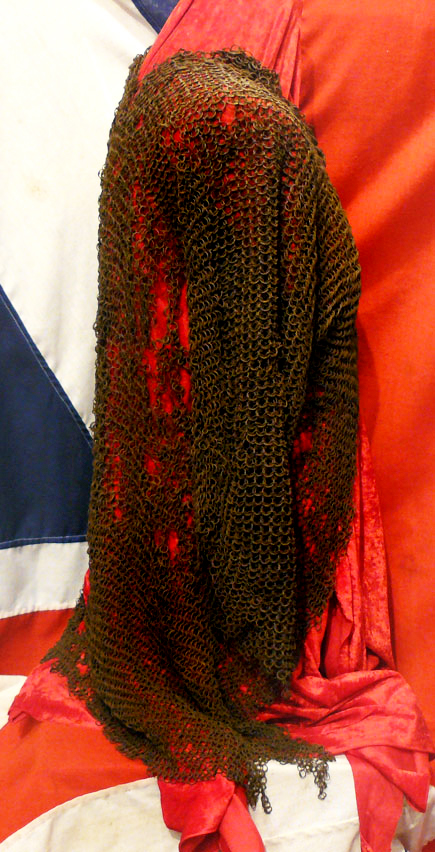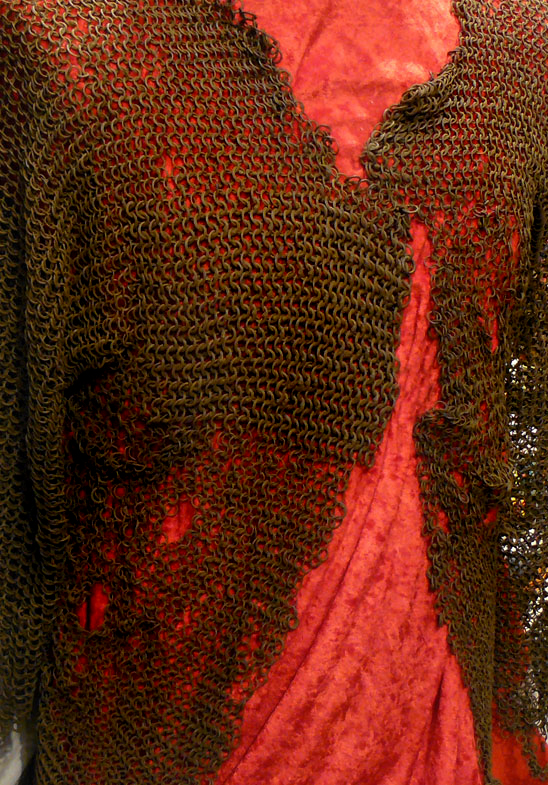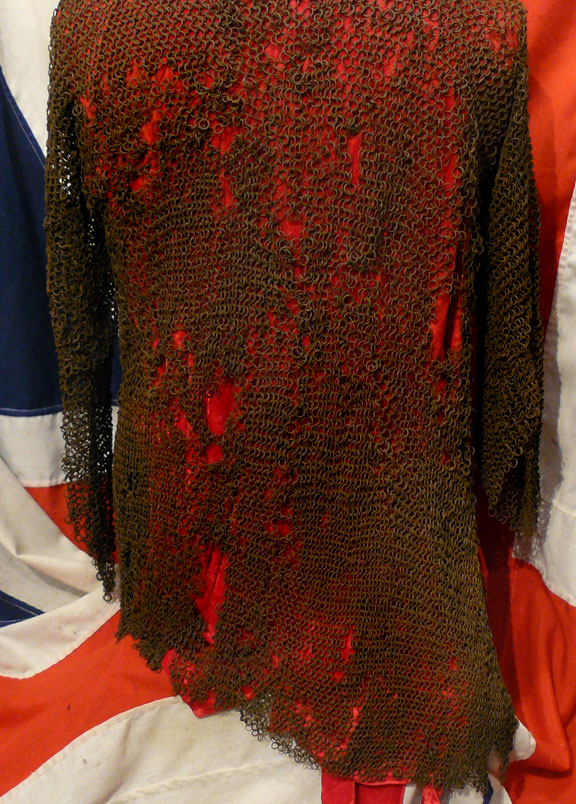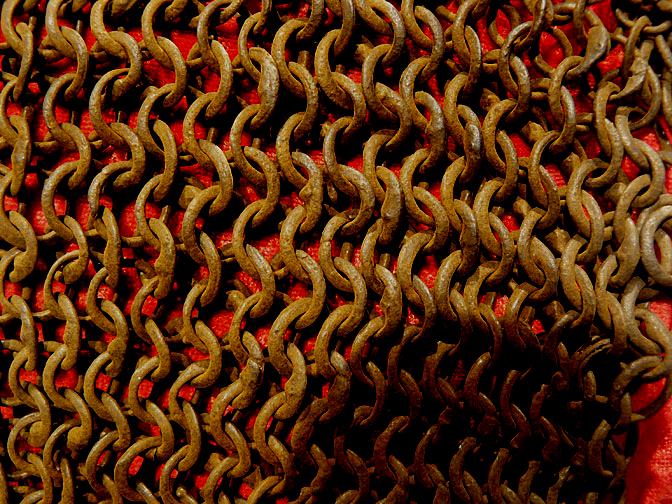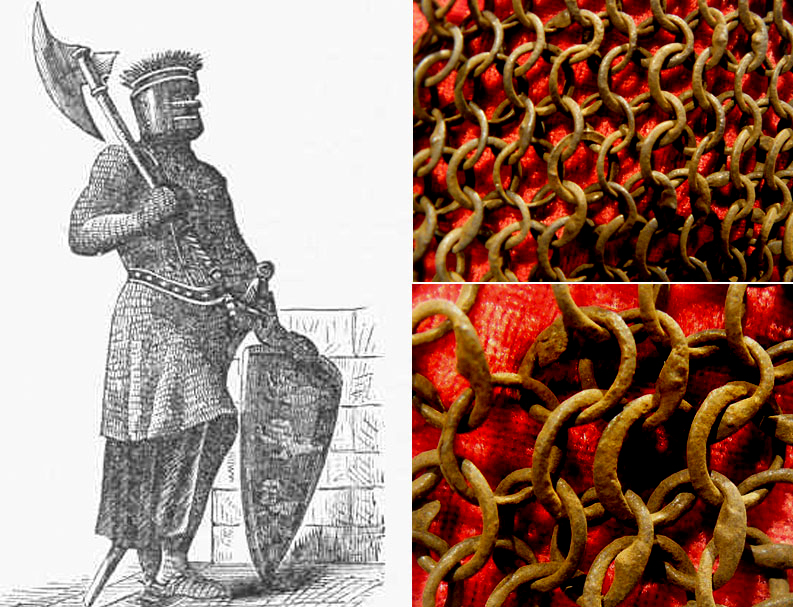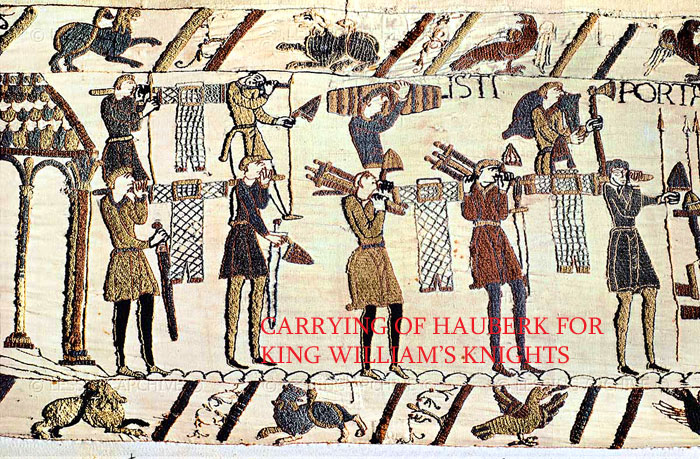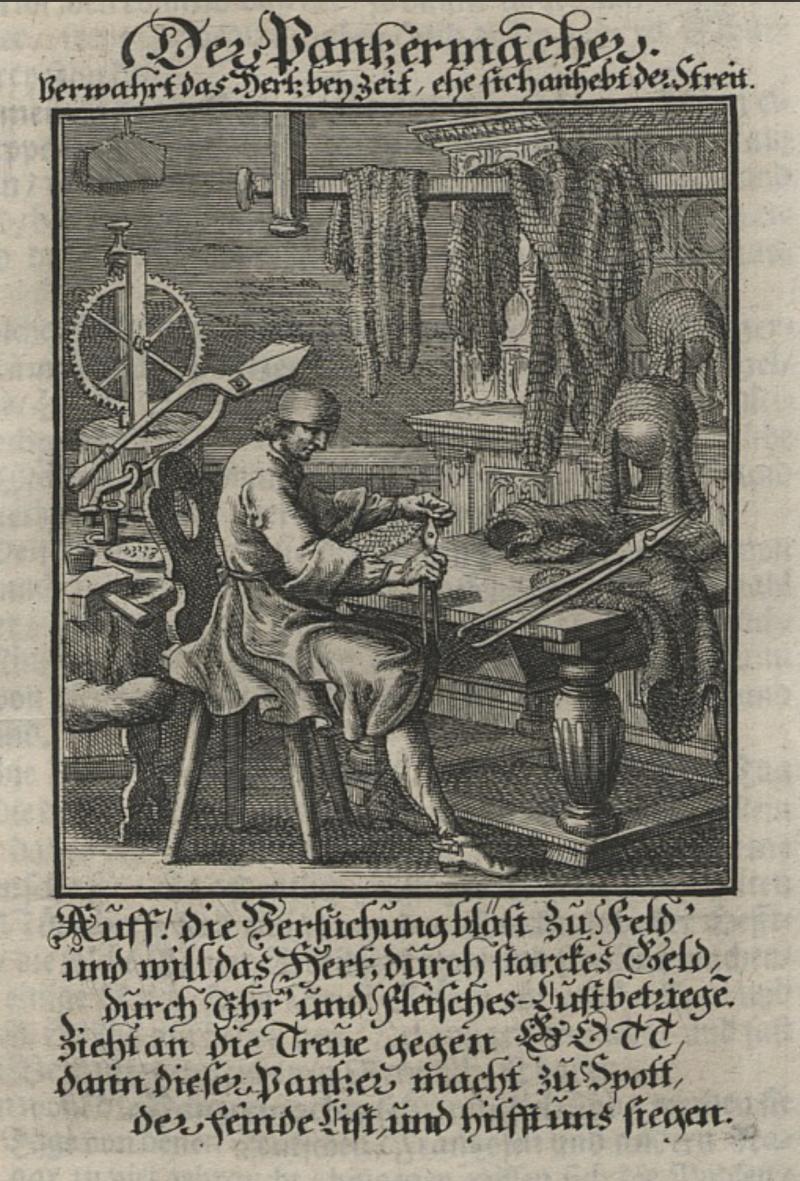Wonderful, Very, Very Rare, Original European Medieval Crusader Knight’s 'Hauberk', Chain Mail Body Armour Shirt. As Worn, In Combat, By Such As King Edward 1st of England & Louis IX of France, Bohemond VI of Antioch & All The Nobility of Europe
Originally recovered from the Keep of Burleigh Castle, in Perthshire, around 800 to 700 years old, And formerly of the Edred Gwilliam Collection a well reknown collector and specialist of early arms and armour.
The European earliest mail armour is really rare, highly complex to make and extraordinarily expensive, yet very simple as a full armoured king or knight only wore a helmet and hauberk, and hauberks are only ever seen in such a near complete state in the best museum or castle armoury collections, such as in the Tower of London, Nuremburg Castle or the British Museum.
This mail would be ideal for the connoisseur of medieval European history or the collector of rare armour. It has a near unlimited abundance of the intellectual beauty of ancient history, and as a surviving example of the pageantry from the earliest days of early, European, chivalric knighthood and the crusades is simply wonderful.
This is a medieval Hauberk from the late Crusades era the late 1200's up to the 14th - 15th century, and at one time it was housed in the keep of Burleigh Castle, and found during an excavation of the keep area of the ruin around 200 plus years ago. Although once a large and imposing castle, Burleigh Castle now consists of a ruined 15th-century tower of three storeys and an attic, which had bartizans at three of the corners and a caphouse over the stair at the fourth. This tower is joined by a surviving section of courtyard wall, with a gate, to a corner tower. The corner tower is round at the base, but corbelled out and crowned with a square chamber. The walls are pierced by shot-holes, and one of the skewputts has the date 1582..
The rectangular tower had a corbelled-out parapet and garret storey, but these are gone except for the remains of open rounds.
The mail coat or hauberk formed a flexible metal armour shirt that was often worn over a padded tunic. The traditional image of the knight encased in a full suit of plate armour did not come about until the 1400s. It is relatively complete with some separated areas that could be reconnected with a little patience and skill. The word hauberk is derived from an old German word Halsberge, which originally described a small piece of mail that protects the throat and the neck (the 'Hals'). The Roman author Varro attributes the invention of mail to the Celts. The earliest extant example was found in Ciumesti in modern Romania and is dated to the 4th-5th centuries BC. Roman armies adopted similar technology after encountering it. Mail armour spread throughout the Mediterranean Basin with the expansion of the Romans. It was quickly adopted by virtually every iron-using culture in the world, with the exception of the Chinese. The Chinese used it rarely, despite being heavily exposed to it from other cultures.
The short-hemmed, short-sleeved hauberk may have originated from the medieval Islamic world. The Bayeux Tapestry illustrates Norman soldiers wearing a knee-length version of the hauberk, with three-quarter length sleeves and a split from hem to crotch. Such armour was quite expensive both in materials (iron wire) and time/skill required to manufacture it Only the wealthy, the nobles, could afford to purchase mail shirts, and so a hauberk became a symbol of rank for the warrior class of society. The first step involves the smelting of iron, and after that, one must make the wire. Making the wire requires the use of small, thin sheets of iron and then shearing thin strips off the sides of this sheet in order to form square wires, or using another method, one can repeatedly beat and shape small iron pieces into narrow rods in order to form the raw material needed for wire. Made with alternate rows of rivetted and solid links. see below regarding a study by Professor Smith from similar hauberks in the Met collection.
After making the rods, the armorer must reheat and draw the strips through conical holes in a metal block to form round wire, and if thinner wire is needed, he can repeat this step several times using narrower holes. Once the wire is reduced to the desired diameter, it is then wrapped around a metal rod to create long, spring-like coils. The armorer then cuts along the length of the coil, down one side with shears or hammer or cutting chisel, and this causes the coils to separate into individual rings. Each ring is then flattened with a tool called a die, or something similar, and while flattening, the die also punches holes in each end of the ring. The armorer then overlaps the ends of each ring and rivets them shut. This process of flattening, punching with a die, joining the rings together, and then riveting them might have to be repeated thousands of times in order to make a single shirt of mail.
The hauberk stored in the Prague Cathedral, dating from the 12th century, is one of the earliest surviving examples from Central Europe and was supposedly owned by Saint Wenceslaus. In Europe, use of mail hauberks continued up through the 14th century, when plate armour began to supplant it. The hauberk is typically a type of mail armour which is constructed of interlocking loops of metal woven into a tunic or shirt. The sleeves sometimes only went to the elbow, but often were full arm length, with some covering the hands with a supple glove leather face on the palm of the hand, or even full mail gloves. It was usually thigh or knee length, with a split in the front and back to the crotch so the wearer could ride a horse. It sometimes incorporated a hood, or coif. The iron links of the mail shirt provided a strong layer of protection and flexibility for the wearer. The overlapping rings allowed a slashing or cutting blow from a sword to glance off without penetrating into the skin; though a smashing blow from a club could still shatter or break or crush bones. For this reason to prevent the breakage of bones a knight would wear a layer of padded armour, or an aketon, underneath the mail. So the combined layers of padded tunic and mail gave the knight a suit of armour that was nearly impervious to cutting and slashing and also protective against the heavy, smashing blows often delivered on the medieval battlefield.
This was a property of the Balfours of Burleigh from 1446, who built the castle, and was visited by James IV. It passed by marriage to James Balfour of Pittendreich in the 16th century through the heiress Margaret Balfour. He was involved in the murder of Cardinal David Beaton, and was captured at St Andrews in 1546 to spend the next two years as a galley slave of the French. On his release he sided with Mary, Queen of Scots, but then spied for the Protestant faction and revealed her military plans. He was made Lord President of the Court of Session, and was party in having James Douglas, Earl of Morton, executed for his part in the murder of Henry Stewart, Lord Darnley. He died in 1583.
Two Illustrations in the gallery are of the Bayeux tapestry embroidery, that show hauberk's being carried for battle, on long poles, by the squires, and a hauberk, in the second picture section, being taken from a fallen knight's body lower section under Harold Rex {King Harold}. Another picture in the gallery is from an old manuscript showing the tradecraft in the manufacture of mail armour.
After we examined it in detail, it is indeed made as described by Professor Smith in his report of links of 16 14th century armour
ie; Alternate rows of rivetted and solid links, after examining 16 links from their various armours at the Met. Cyril Stanley Smith
Technology and Culture
Johns Hopkins University Press
Volume 1, Number 1, Winter 1959
Code: 21436

